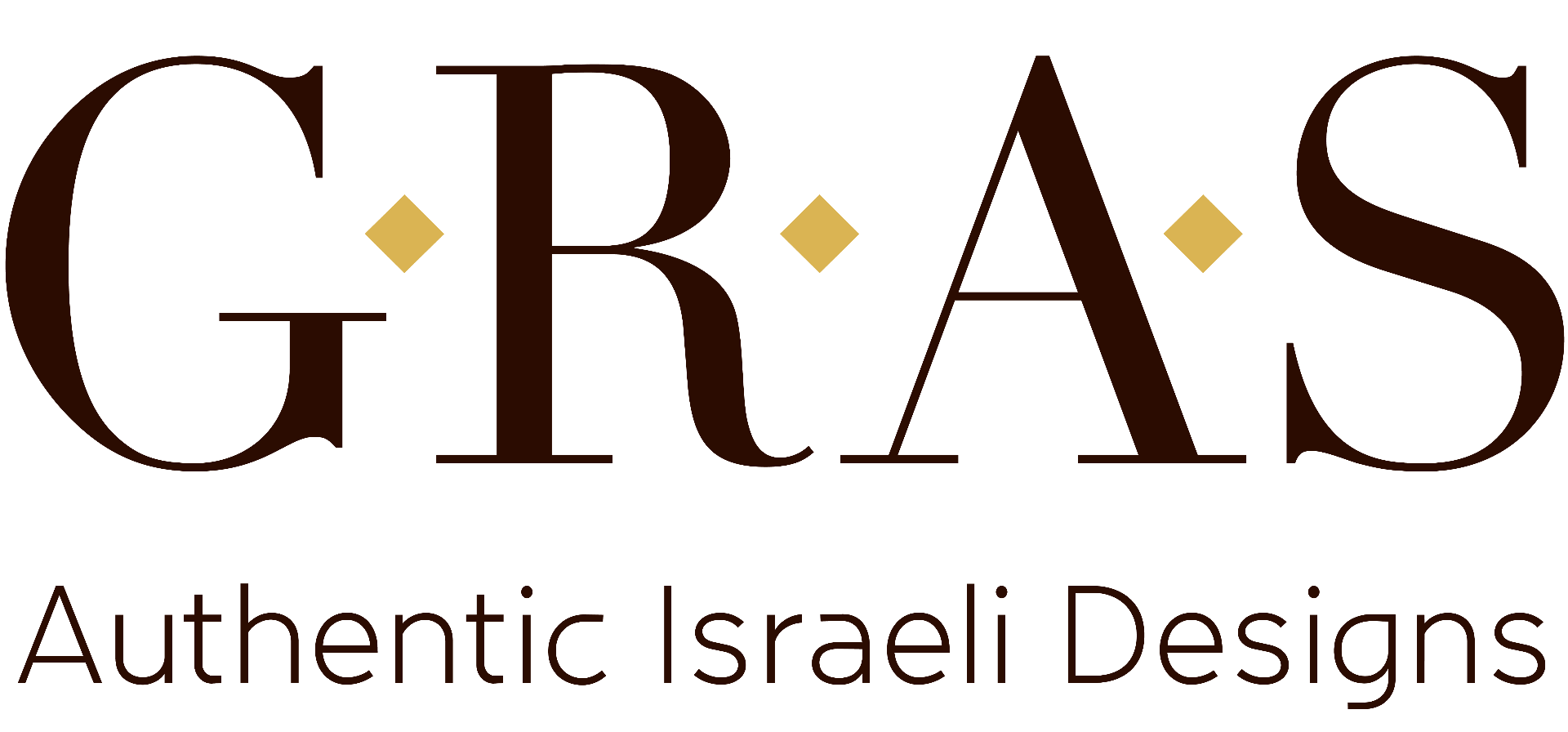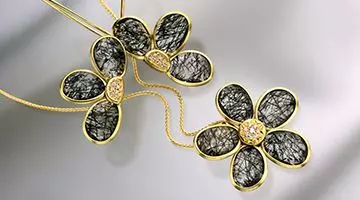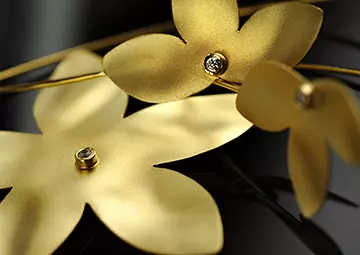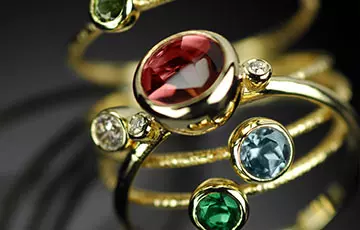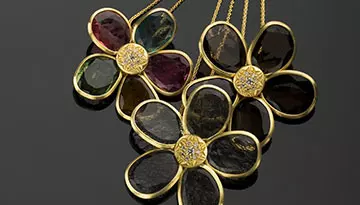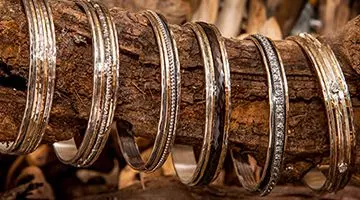COMPOSITION OF METALS
Gold
Gold is one of the three noble metals of the Earth, alongside Silver and Platinum. A noble metal is a metal that is resistant to corrosion in water and can be worn without concern of a harmful reaction. Compared to other metals, gold is a soft metal which makes it ideal for crafting into jewelry.
Throughout history, gold has retained its value and continues to be bought, sold and traded as a method of investment. Many banks and trading systems maintain their capital in the form of gold bars, and culturally gold has always been perceived as a symbol of prestige, wealth and success.
Karat (k) System
The unit in which the purity of gold is measured is based on a division of 24 basic components, making a gold karat 1/24 part of the whole. Pure gold is 24-karat gold, while 16-karat gold is made up of 16 parts gold and 8 parts alloy. 24-karat gold is very soft and difficult to work into a finished jewelry piece at times. Therefore, it’s common practice to add other metals such as silver, copper, zinc or nickel to add strength to the gold, hence you have jewelry made with 9k, 14k, 18k, 21k, etc.
- 9-karat Gold contains 9 parts gold out of 24, or 37.5% pure gold, and is stamped 375
- 14-karat Gold contains 58.5% pure gold, and is stamped 585
- 18-karat Gold contains 75% pure gold, and is stamped 750
- 21-karat Gold contains 87.5% pure gold, and is stamped 875
- 24-karat Gold contains 100% pure gold, and is stamped 999
Colors of Gold
The original, most traditional color of pure 24-karat gold is a bright, rich yellow. Gold that is lower than 24-karat may not have the same exact tone and saturation of color.
- Yellow Gold: To maintain the original bright, rich yellow color of gold in gold that is lower than 24-karats, equal amounts of silver and copper are used.
- Rose Gold: Gold that includes a higher content of copper will have a slightly reddish, rose-colored appearance. The higher the content of copper in the gold, the redder it’s color will appear.
- White Gold: Gold with a higher content of the white-colored metals, platinum or palladium, will have a white, silver-like appearance.
Sterling Silver
925 Sterling Silver is the international standard used across the jewelry industry and within silver crafting. Since pure silver is a relatively soft metal, a small quantity of copper is added to harden and provide the required strength the metal needs to maintain it’s form. 925 Sterling Silver is composed of 925 units of silver (92.5%) and 75 units of copper and other metals (7.5%).
Oxidation
Oxidation of silver, which darkens the metal, may at times be applied as part of the design of the silver jewelry. Oxidation is to be distinguished from tarnish, which is the result of oxidation, which does occur naturally to silver over time. The process of oxidizing silver is to immerse the silver into an acid called Oxide, which penetrates into all the groves and darkens the silver jewelry. If the design intention is to only darken parts of the jewelry, for example only the groves, then the rest of the jewelry piece would then be cleaned, shined and polished to restore its natural shine and obtain a perfect finish. When done properly, Oxidation gives jewlery a unique, antique look that should complement the jewelry design.
Learn how to clean and care for your silver jewelry in the Jewelry Care Guide.
Gold Filled
Gold filled jewelry is produced by a chemical or electronic process which bonds layers of solid gold with other metals, such as brass, silver or other base metals. Ther percentage of gold in the metal has to be a minimum of 5% to be considered gold filled. Gold filled jewelry looks just like standard gold jewelry, and has a lower cost in comparison. Typically, gold filled jewelry is stamped with the karat gold and the letter GF. For example, 12kGF represents jewelry that is gold filled with 12-karat gold. As a note, it is not required to stamp gold filled jewelry and therefore, you may not always see the relevant stamp on pieces. As gold filled jewelry contains other metals, it should be refreshed, cleaned and cared for in the same way as silver jewelry.
Gold Plated
Gold plated jewelry consists of a thin layer of gold, 0.05% actual gold or less, that coats the base layer of silver. The karat of gold plating ranges from 14-karat to 24-karat gold. The process of gold plating is a chemical one which allows for any metal to be gold plated. Gold plated jewelry should be treated and cared for in the same way as silver jewelry, avoiding exposure to harmful elements and solutions.
Standards Institute of Israel (SII)
The Standards Institute of Israel (SII) is the national standardization body of Israel and has been the national leader on quality since its establishment in 1923. The institution is a Public, non-profit, Statutory Organization empowered by the Standards Law 1953, and publicly governed by representatives of organizations playing a major part in the national economy.
The SII works in accordance with international gold standards in its role to assess and test the purity of the gold in jewelry as determined by the producer. Once validated by the SII, a stamp is usually placed on the jewelry on either the back of the piece or besides the clasp. This stamp is usually so small that it’s only visible under a magnifying glass in order to distinguish the relevant stamp details. The SII’s assay symbol is of a harp, with the gold karat engraved underneath.

